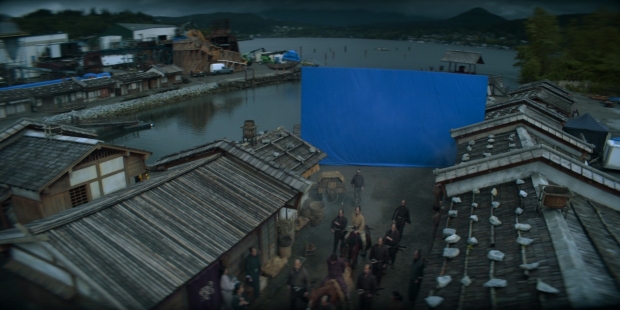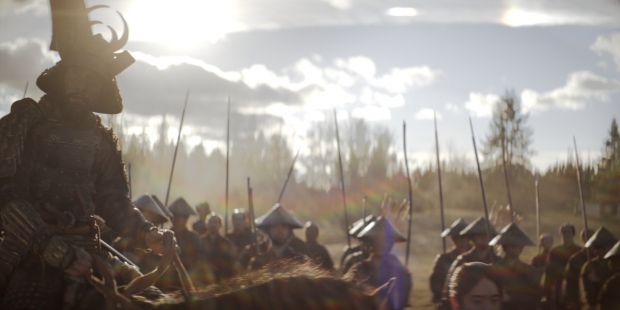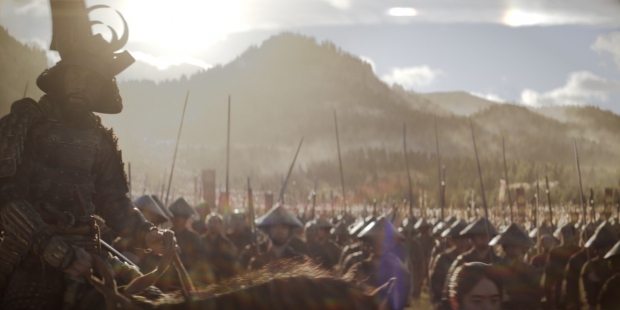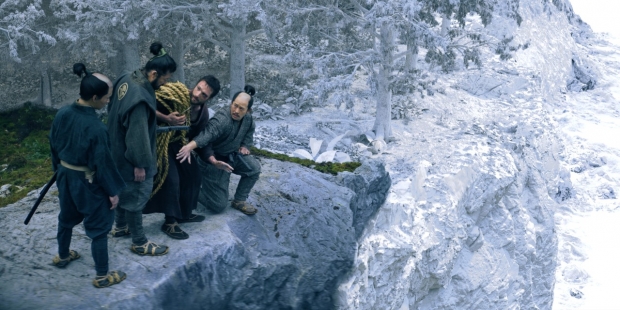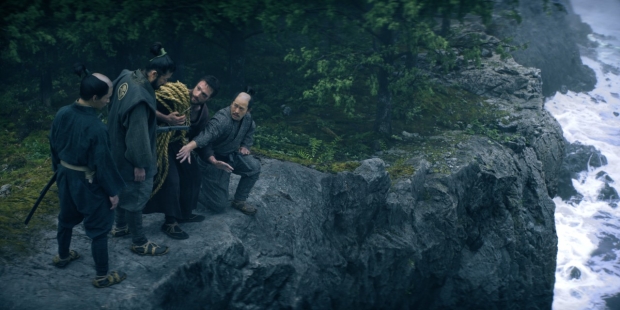Co-creators and EPs Justin Marks and Rachel Kondo, along with their production team on FX and Hulu’s 10-episode limited series - based on James Clavell’s famous 1975 novel - always strove for authenticity in their depiction of Japan in 1600, from its ships to the city of Osaka, even the oil lamps and wicks used to light rooms.
Authenticity was a driving factor on the production of FX’s Shōgun, a historical drama series based on James Clavell’s 1975 novel that had previously been adapted into a famous TV miniseries in 1980. The new, 10-episode limited series proved a major learning experience for all those involved. “It was a messy process,” admits Justin Marks, co-creator, executive producer, showrunner, and writer. “In the early days we had a good swathe of white and Asian writers in the writers’ room, but Asian America by and large,” he shares. “We didn’t have any Japanese Japanese writers. It wasn’t until we began to work with our consultant Mako Kamitsuna and went through these scripts line by line, and in certain instances, started over from the point of the view of a Japanese producer looking at this and saying, ‘Characters wouldn’t speak or act or think like this.’ Thank God for the pandemic in that case. We had a whole year to do that process. It was a real advantage to take the time to make mistakes and to get it right before we even started the process of production. By the time we were hiring crews on the show, we at least had a sense of this journey knowing what we don’t know and starting to go there. It was a bit like an ad hoc document that writer/producer Caillin Puente was putting together but turned into this instruction manual that was nearly 1,000 pages long by the end of it.” Rachel Kondo, co-creator, executive producer, and writer, laughs. “Probably more information heavy and less plotty than the Clavell novel, but nevertheless informative! Feudal practices. Funeral rights. Anything you could think of was in there.”
British Columbia stood in for 1600 Japan, where in the story, the relationship between shipwrecked English sailor (“pilot”) John Blackthorne and Lord Yoshii Toranaga tips the power struggle for control of the country in the favor of the latter. “Even the places that you’re depicting in Japan don’t look like what they used to look anymore,” observes Marks. “This was the big thing with Michael Cliett [Visual Effects Supervisor] that we worked on carefully and often discussed. It was a bummer that we didn’t get to go to Japan. That’s why we signed up for this project! Then this pandemic happened, and we had to make other plans.” Jon Favreau offered some words of wisdom when making The Jungle Book. “One of the things that Jon said that always stuck in my head was, ‘This movie should feel like the promise of what you imagined the space would be.’ Which is to say that it’s going to feel a little more than real and you have to trick the audience in looking at something and saying, ‘That is real.’ We took that with Japan to say, ‘What is the psychological experience of feudal Japan?’ This idea that James Clavell had created was that of a dream of a dream which gave us a motif that we were constantly working with landscapes that felt both infinite and also limited in what we could see of them at any given time. You merge that with the other basic TV reality that you only have so much money to build this place. I really don’t like visual effects shots that feel like, ‘Here’s what we spent our money on. Take a look. It’s beautiful, isn’t it?’ I like visual effects when it sits in the background in service of the world building, and you don’t even notice that’s happening.”
Deciding upon the visual aesthetic of Shōgun required a journey of discovery for director Jonathan van Tulleken and cinematographer Christopher Ross, who were responsible for Episodes 101 and 102. “What is the color temperature?” Ross recalls. “What is the vibe? What does Osaka feel like? What is medieval Japan in the mind of the audience? One of the influences on the show was The Revenant and its thoughtful camera movement through the forest, its use of natural light, and its use of first-person narrative. All the spherical lenses, modern or vintage, essentially present you with a representation of reality. Whatever there is in front of the camera is present through the sensor and you go from there. For me, the variations of anamorphic technology all add their own interpretation of the imagery and reality; that’s what Jonathan was intrigued by, so I shot a bunch of tests in Vancouver six or seven weeks before production started.”
Compromises had to be made every day for each shot. According to Ross, “It was case of trying to lean into the amazing work of Helen Jarvis, the production designer. She had spent a year of her life putting together concept art and set plans. I used those as a launching off point to say, ‘The harbor of Osaka is an incredible thing to look at and just half a kilometer up the hill is Osaka Palace. The two things are joined, but wouldn’t it be amazing to sweep a drone over the water past the shipwreck, boats, and fishermen, over the jetty, over the heads of the marketplace in Osaka, and all the way to the palace to see a sunset on the horizon.’ It is a case of talking about those great standout moments in the story where you lean into some incredible visual effects work, and then the other side of the coin is we don’t have enough samurai for this scene, can we do a crowd replication on six of the shots and create a battalion of a 1,000?”
Most of the set design is done within the computer. “The days of people making physical three-dimensional models out of cardboard and glue have ebbed away but not completely,” observes Jarvis. “We always now have at least one or two people in the department who print digitally and can create absolutely accurate models. That’s great and elevates the process. Then of course, it makes it much easier with visual effects when you have something developed in that way.” The methodology for the art department was not altered for the show. “Because I had to develop sets that could be multifunctional, what was most helpful to me was when I had set designers who could actually animate, so we could walk through sets and show people how different they could look. I didn’t get all my directors at once, so I had to feed them little packages of information ahead of time and try to do walkthroughs. The walkthroughs were helpful.”
One interesting design detail was that paper lanterns were more of a 19th century invention. “The predominant way of lighting rooms at the time were these tiny saucers of oil with wicks, which were often only two or three feet off of the ground,” Jarvis explains. “So, you get a lot of lighting of faces, and the rest of the room falls away into a glow as you will and then you get lighting coming in from the open shoji screens, which is how people lit their rooms.” Considering the details was imperative when trying to capture the subtleness and specificness associated with Japanese culture. “I’ve done many different types of shows where you’ll fill a set up with what seems to be appropriate dressing and it’s all a bit of blur,” Jarvis notes. “But you couldn’t do that on this show. Everything had to be carefully mapped and thought out. There is a reason for why that object is there.”
Storm sequences required tight collaboration between special effects, led by Cameron Waldbauer, and visual effects. “The galley was 125 feet long and we had maybe a 30 or 35-foot section of it,” explains Cliett, the show’s visual effects supervisor and visual effects producer. “Cam attached a gimbal to that where we actually got 45 degrees in either direction. The whole sequence with Rodriguez and Blackthorne on top was shot with that gimbal. Cam also did a great job with waves and water and getting that in there. But when we actually got into post, we wanted to add even more wind and rain to make it look that more violent. We were saying that there was a 75 mile per hour wind going through the banners and all of them were replaced with CG. We added sideways wind and water running off the decks. We matchmoved the galley model to do water dynamics that we could then composite in on top of practical water.”
Overall, Cliett concludes, the production stayed true to its overriding mantra: “We didn’t want anything over the top or fantastical. We wanted shots to look believable and realistic.”







